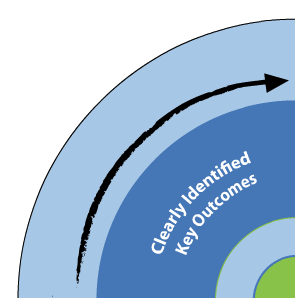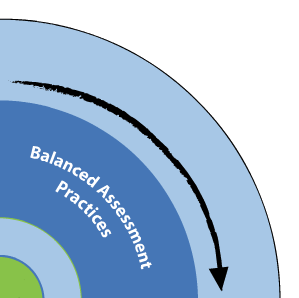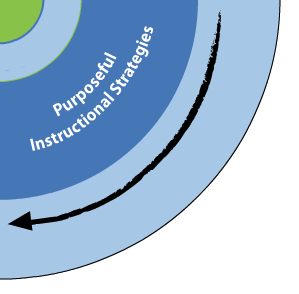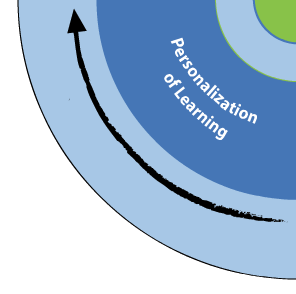Metacognitive Skills - Asking Questions
Asking Questions
Page Navigation
(Click to jump to section)
| Research | Clearly Identified Key Outcomes | Balanced Assessment Practices | Purposeful Instructional Strategies | Personalization of Learning |
Research
- “Question asking and answering can be viewed as the strategy that drives all of the other strategies. In other words, it is the process of asking and then answering questions of oneself and the text that brings the other strategies to life” (Neufeld, 2005, p. 304).
- Readers pose and answer their own questions that clarify meaning, make connections and promote deeper understanding of the text.
- Questions can be effective because they:
- Give students a purpose for reading
- Focus students’ attention on what they are to learn
- Help students to think actively as they read
- Encourage students to monitor their comprehension
- Help students to review content and relate what they have learned to what they already know
- By generating questions, students become aware of whether they understand what they are reading. Students learn to ask themselves questions that require them to combine information from different segments of text. For example, students can be taught to ask main idea questions that relate to important information in a text.
- There are four different types of questions (Raphael, T.E., 1986. Teaching question-answer relationships. The Reading Teacher, 39, 516-520):
- “Right There” – Questions found right in the text that ask students to find the one right answer located in one place as a word or a sentence in the passage.
- “Think and Search” – Questions based on the recall of facts that can be found directly in the text. Answers are typically found in more than one place, thus requiring students to “think” and “search” through the passage to find the answer.
- “Author and You” – Questions require students to use what they already know, with what they have learned from reading the text. Student’s must understand the text and relate it to their prior knowledge before answering the question.
- “On Your Own” – Questions are answered based on a student’s prior knowledge and experiences. Reading the text may not be helpful to them when answering this type of question.

Clearly Identified Key Outcomes
Use your programs of study for curriculum outcomes related to asking questions.
Please refer to CESD’s Essential Outcomes work if you are using the previous Alberta Curriculum (Grade 7+).
Here is the New Alberta ELAL Curriculum, from the New Learn Alberta website, laid out like a scope and sequence.

Balanced Assessment Practices
- Reading Conferences – discuss with students what questions they had before, during and after reading. Did they answer their own questions? Does this cause them to need to read more to help answer new questions? How does this relate to other texts that they have read?
- Have students write their questions down on post-it-notes as they are reading.

Purposeful Instructional Strategies
PRE
- Use an anticipation guide to activate background knowledge, uncover misconceptions and determine questions students may have or want to learn about within a topic.
- Post questions around the classroom.
- Explicitly model a think-aloud by asking and answering some of your own questions, using some of the “getting ready to read” questions. Examples (Neufeld, 2005):
- Read with purpose
- Why am I reading this text? (e.g., to prepare for a class discussion, to write a report about this topic, to review before a test, for enjoyment)
- How should my purpose affect the way I read the text?
- Overview the text
- What does this text appear to be about?
- What are some of the major topics covered in the text?
- How is the text organized? (e.g., enumeration, time order, compare and contrast, cause and effect, problem/solution)
- Activate what you already know
- What do I already know or think I know about this topic?
- Predict
- I think this text is going to be about…
- Read with purpose
DURING
- Using sticky notes, students list all the questions they have about the text.
- Refer to the questions posted around the room. During reading questions could include:
- Consider text organization
- Do I see any keywords associated with specific text structures?
- How is the text organized? (e.g., enumeration, time order, compare and contrast, cause and effect, problem/solution)
- Check your understanding
- Is what I just read clear to me? Do I “get it?”
- What about the text is still fuzzy or unclear?
- Can I answer who, what, when, where, and why questions about the text?
- Use fix-up strategies
- What strategies could I use to help me better understand what I’m reading?
- Reread part or all of the text
- Look ahead in the text
- Examine other resources on this topic (e.g., books, webpages, videotapes)
- Seek help from another person (e.g., student, teacher, parent)
- Consider text organization
POST
- Answer the questions students asked on the pre-reading anticipation guide.
- Again, refer to the questions posted around the room. Post-reading questions may include:
- What conclusions/theories/explanations does the author provide?
- How do we know? What is the evidence?
- What other conclusions could be justified by the evidence?
- What are the relationships involved? Are there any cause and effect relationships?
- Where might I encounter these concepts in the world?
- How has this author changed what I previously understood?
- What in the text helped me/you know that?
- How is/did this text making me/you feel? Why is that?
- When you read the text, did it remind me/you of anything I/you know about? Why did it remind me/you about that?
- What did the author mean by…?
- Whose point of view is this? What points of view are missing?
- Summarize the text
- Oral/written – stop and restate the main ideas/points in your own words orally or in writing
- Visual – create a visual organizer that captures both the organization of the text and the main points or idea





RESOURCES TO SUPPORT OVERALL DEVELOPMENT

Personalization of Learning
- Posting Bloom’s Taxonomy in the classroom to guide students as they formulate their own questions.
- Ensure that struggling readers are not limited to only answering lower level questions.
- Allow choice in how questions are answered (E.g. Not everything needs to be a paper and pencil, worksheet-style activity).